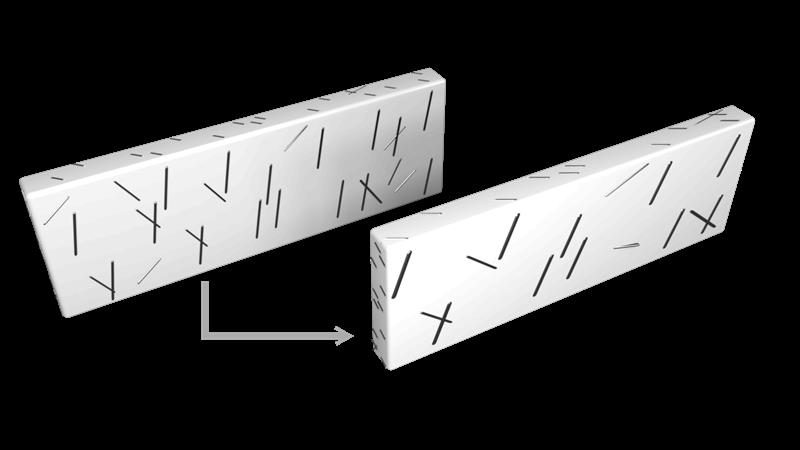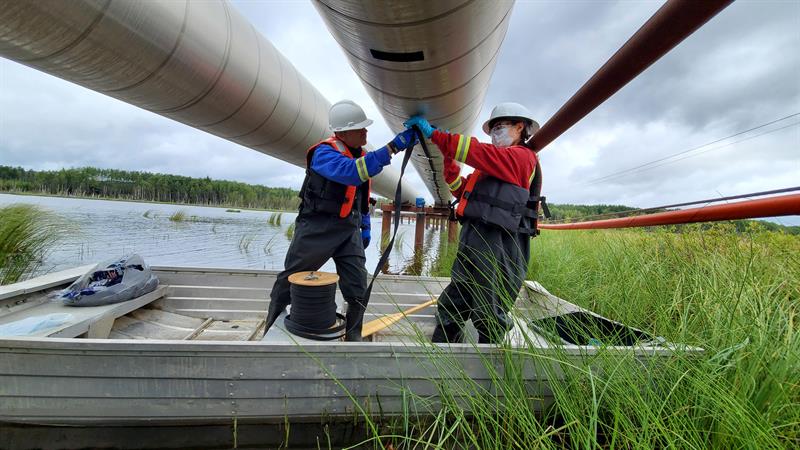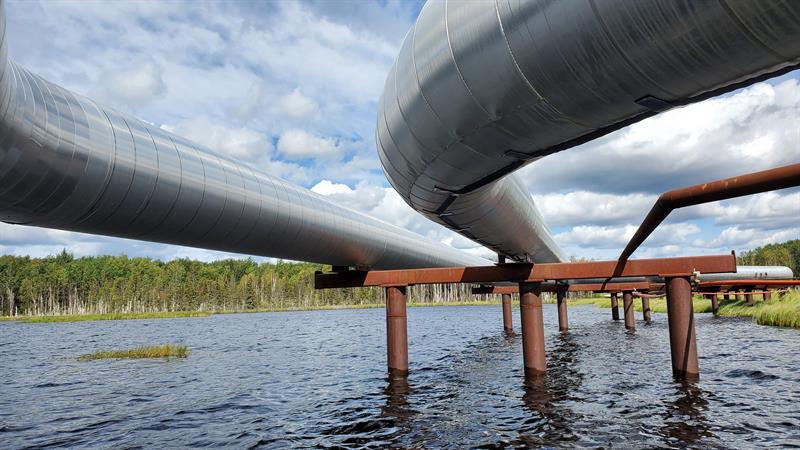Oil and gas pipeline leakage is a huge problem for the industry. Major oil spills such as the very recent one off the coast of Orange County, California which sent at least 126,000 gallons of oil into the Pacific, rightly get global news coverage, but the constant ongoing leakage of oil and gas worldwide is a serious issue.
Clearly, early detection of escaping hydrocarbons is urgently needed, and one innovative solution developed by Canadian company, Direct-C, is now using flexible printed circuits - 26 metres in length - produced in the UK by Trackwise Designs to facilitate detection systems that are able to operate continuously and remain in situ for 20 years.
Based in Edmonton, Alberta, Direct-C develops leak detection products that utilize a proprietary nanocomposite which is specifically designed only to react to liquid hydrocarbons (typically C4-C20). The system comprises of a sensing element consisting of a silicone-based polymer embedded with conductive nanoparticles. The silicone-based polymer swells in the presence of hydrocarbon molecules, causing increases in the distances between nanoparticulates, thereby increasing the resistance of the sensing element as shown in the figure below.

Above: The effect of hydrocarbon exposure on polymer nanocomposites
The nanocomposite is applied as a coating to a substrate which also contains electronic circuitry that can capture this change in resistance and feed the information back, identifying the presence of a leak. The addition of nanoparticulates into the polymer matrix increases electrical conductivity and reduces material costs. Moreover, the geometry of the nanoparticulates results in improvements in the robustness and stability of the coating over time.
Direct-C offers several products that use this technology, including WrapSense, which is provided as strips that can be positioned along a pipe, delivering - the company claims - "previously unachievable certainty in 24/7 leak detection monitoring for the oil and gas industry...(that is)...completely free of false-positive alarms".
When a leak is detected, a signal is sent back instantly to a control centre using a low power cellular wireless connection with precise location information, enabling swift action to be taken to minimise the impact of the leak. WrapSense is typically placed on the underside of the pipe where any leaks will gather, at critical locations - such as over a river, marsh or other sensitive area. Less vulnerable lengths of pipe may be monitored using less accurate but cheaper flow meters. WrapSense can remain in place for many years with no maintenance, except for the periodic changing of the IoT wireless transmission units every five years when the batteries run out of charge - in remote areas there is rarely mains power.

Addressing reliability
Direct-C's challenge when implementing WrapSense was producing long lengths of the sensing strip. Initial products rely on 50cm lengths daisy-chained together. Using this method, the company has produced WrapSense installations of many metres, but reliability was a concern because of the number of connectors required. Installation was also an issue, as handling long lengths of WrapSense held together with connectors proved problematic, requiring the addition of a stiffening element to make a robust system.
Enter Trackwise, a UK company that specialises in long, single- and multi-layer flexible printed circuits (FPC). FPC manufacturing techniques have traditionally limited their length to less than one metre, but a patented innovation in the manufacturing process by Trackwise called Improved Harness Technology (IHT) has removed these restrictions, opening up many new applications.
Unlike conventional FPC manufacturing techniques that are based on static process steps, IHT uses dynamic processes based on reel-to-reel techniques to enable the cost-effective production of length-unlimited multi-layer FPCs. Recently, Trackwise broke its own record by producing a 72m long FPC for an energy generation company that contains 434,652 through holes and 434, 636, all plated, with a total routed path length of 4785m.
FPCs, of course, deliver many advantages over traditional harness interconnect systems. FPCs take up considerably less space and weigh much less than wiring harnesses. Very thin dielectric substrates, some down to 40µm or less, coupled with their planarity, also make it possible to bond the circuits to, or within, the structure of a product, enabling multi-functional structures. Total system weight savings also result because fewer connectors and fixings are required. Smaller conductors and reduced copper content make an additional contribution.
FPCs are very versatile, as they are custom-designed to fold, bend and fit into virtually any shape of housing. They are also more reliable since they have fewer interface connections. Physically, FPCs are more resistant to vibration and shock than rigid PCBs.
In terms of electrical performance, crosstalk, noise and electromagnetic compatibility (EMC) are all tightly controlled by the FPC manufacturing process. FPC layer build constructions can provide lower inductance and lower radiated emissions than conventional wiring, and impedance control is more easily achieved. Flat foil conductors within the FPC can dissipate heat better and carry more current than equivalent round wires.
Significantly, FPCs lead to cost reduction thanks to a number of factors: simplified assembly; elimination of wiring errors; reduced component count; higher levels of automation resulting in greater repeatability and precision; and lower installation costs.

WrapSense
Direct-C approached Trackwise, because of the company's proven ability to produce long FPCs, and together with test house TWI, the three companies have successfully built and trialled one-piece, 26m-long strips of WrapSense.
According to Direct-C's Chief Science Officer, Stephen Edmondson, "Our main concern was ruggedness and reliability. A 10m long WrapSense produced using separate smaller 50cm lengths might contain 300 solder joints - and each one is a potential failure point. With a continuous strip, you have, perhaps, only eight solder joints, so the unit is much more reliable and easier to manufacture.We do make very long lengths of WrapSense: we just completed a 350m run for a European refinery using 50cm piece parts as a pilot. It works very well but using Trackwise's IHT FPC will significantly improve robustness and reduce installation time."
Scaling up is another key issue. Edmondson: "If someone ever orders 20km of WrapSense, we certainly don't want to be making that using 50cm lengths!"
Direct-C and Trackwise worked very closely on materials selection to ensure that the substrate did not contaminate the nano-composite coating, and also on the choice of protective mesh. Another challenge that Trackwise has had to address is the solder masking of such long lengths of FPC required to place the electronic components that complete the WrapSense sensor circuitry on the opposite side of the FPC to the coating. Trackwise is working to implement reel-to-reel component assembly on the IHT FPCs which will further streamline the manufacturing process.
Finally, Trackwise's experience in the aerospace industry where the highest quality and reliability levels are routinely demanded was invaluable for Direct-C.
Amongst the many benefits of FPCs that have been mentioned, one stands out: FPCs are simply printed according to the spec as one machined item, so the risks of errors creeping in are minimized and each part will be the same as the other, time after time. As well as being used in aerospace and the oil and gas industries, FPCs are finding applications in many sectors, including automotive, consumer, medical, entertainment, IT and industrial equipment.
Currently the biggest number of layers that Trackwise has incorporated into an IHT length-unlimited FPC is eight, but the company's mantra is 'never say no to anything, it can be done'.
Author details: Philip Johnston is CEO Trackwise













